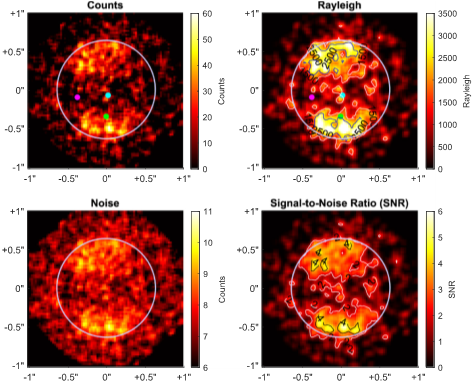New results on the moons of Jupiter
Researchers from SPP publish new results
The atmosphere of Jupiter’s moon Io – the most volcanic moon in the solar system - consists mostly of sulfur dioxide (SO2) and is sustained by two competing sources: direct outgassing from active volcanoes and sublimation of frost deposits on the surface. While the volcanic outgassing source undergoes rather random and aperiodic changes, changes in sublimation are seasonal. In a recent SPP study ( doi.org/10.1016/j.icarus.2020.114212 ), we (Gabriel Giono and Lorenz Roth) have investigated observations of Io’s SO2 atmosphere by the Hubble Space Telescope taken on various occasions over almost two Jupiter years (~19 years). We searched for both local changes due to activity at volcanic regions and long-term changes due to the changing distance to the Sun. Overall, we found a rather stable atmosphere and did not detect local, transient or strong global changes. The non-detection of changes might be due to the limitations of the particular observing method, which we have characterized in detail in our study for the first time.

In another SPP project on the moons of Jupiter, we investigated the generation of aurora in the atmosphere of Io as well as of neighboring moon Europa. The recently finished project ‘AuroraMHD’ simulated to plasma interactions that create the moon auroras, which have implications for other aspects such as moon Europa’s potential to support life .
